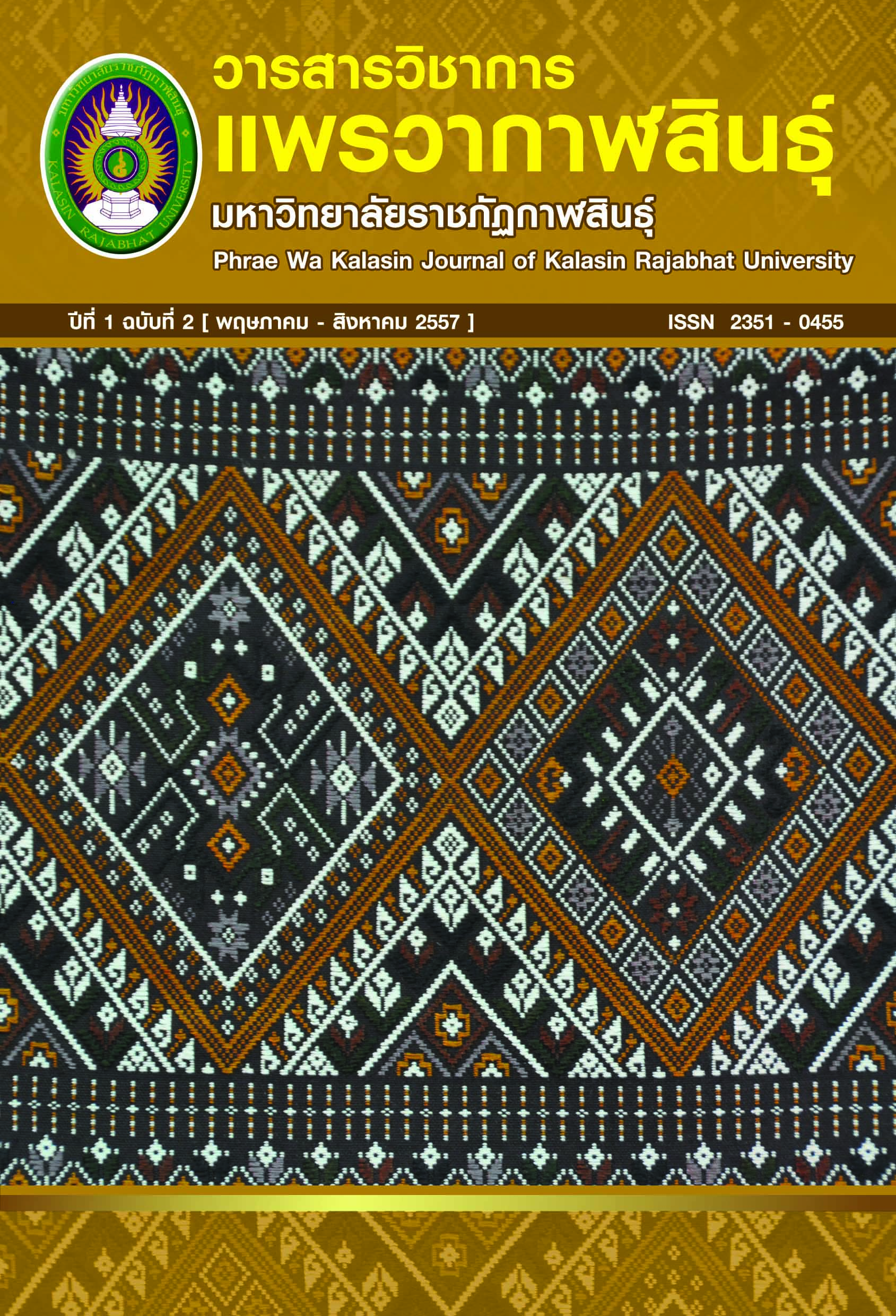ภาพสะท้อนทางสังคมจากองค์ประกอบเชิงซ้อนในวรรณกรรม : กรณีหนังสือ “สังข์ศิลป์ชัย” ฉบับภาคใต้ Social Reflection through the Composites in Literature : A Study on the Book “Sangsilpachai : The Southern Edition”
Main Article Content
Abstract
บทคัดย่อ
บทความฉบับนี้เป็นการศึกษาวิเคราะห์ภาพสะท้อนทางสังคมจากองค์ประกอบเชิงซ้อนในวรรณกรรม หนังสือบุดเรื่องสังข์ศิลป์ชัย ฉบับสถาบันทักษิณคดีศึกษามหาวิทยาลัยทักษิณ ลักษณะคำประพันธ์ที่พบเป็น กาพย์สุรางคนางค์ 28 และกาพย์ยานี 11 จากการศึกษางานวิจัยที่เกี่ยวข้องทำให้พบว่าวรรณกรรมเรื่องสังข์ศิลป์ชัยที่นำมาศึกษานั้นส่วนใหญ่มักจะเป็นวรรณกรรมจากลุ่มน้ำโขง และการใช้เพื่อความบันเทิงหรือวัฒนธรรมด้านอื่นที่ปรากฏชัดเจน เช่น หนังประโมทัย ภาพจิตรกรรมฝาผนังในสิม แต่เมื่อคณะผู้ศึกษาได้ทำการสืบค้นข้อมูลเอกสารพบว่าการใช้วรรณกรรมสังข์ศิลป์ชัยในพิธีกรรมภาคใต้ เช่น โนราโรงครู (ไหว้ครูโนราห์) ในตำบลท่าแคอำเภอเมืองพัทลุง จังหวัดพัทลุง และใช้เรียกชื่อท่ารำหนึ่งในการรำมโนราห์ด้วยจากการศึกษาภาพสะท้อนทางสังคมที่ปรากฏในเอกสารโบราณฉบับดังกล่าวพบว่า มีองค์ประกอบเชิงซ้อน 9 ประเด็น ได้แก่ 1) การเอาตัวรอดของตัวละครประกอบ 2) ภูมิทัศน์บ้านเมือง 3) การพนัน ได้แก่ สกา การเล่นที่สามัญชนไม่รู้จักและสกาการเล่นของชนชั้นสูง 4) ด้านพิธีกรรม ได้แก่ การปลงศพ การขอขมา การรับขวัญ
และพิธีพลีเทวดา 5) ความเชื่อโชคลาง ได้แก่ ดวงดาวและคำทำนาย จิ้งจกตก และการเขม่น 6) อบายมุข 7) สินบน 8) การรักษาพยาบาลและ 9) ตลาดวรรณกรรมเรื่องสังข์ศิลป์ชัย อาจมีแพร่กระจายไปทั่วทุกภูมิภาคของประเทศไทยหรือซึ่งอาจปรากฏนอกเหนือพรมแดนแห่งรัฐในมิตรประเทศของภูมิภาคอาเซียนหากแตกต่างกันเพียงด้านฉันทลักษณ์และกลวิธีในการแต่งในแต่ละท้องถิ่น ในแต่ละวัฒนธรรม หรือแม้แต่กระทั่งนามที่เรียกขานเท่านั้น
Abstract
This research purposively studied and analyzed social reflection through the composites in literature of the Book “Sangsilpachai” code อ.150.064, from the Institute for Southern Thai Studies, Thaksin University. The book is composed of poems called Kab Surangkanang 28 (a poem with 28 syllables per line) and Kab Yanee 11 (a poem with 11 syllables per line). Related works indicate that “Sangsilpachai” was mostly found in Mekong Basin communities and used for entertaining and cultural purposes. Nang Pramo Thai, the paintings on the wall of the assembly hall (Ubosot), etc. serve as examples. However, after studying the related works, the researchers found that “Sangsilpachai” also was found in several southern ceremonies such as Nora Rongkru (showing gratitude to the Nora’s master) in the khae snbdistricr, Amphoe Mueang, Patthalung province and was used as the name of a pattern of the Manora dance. In this regard, the study indicated that the social reflection in this ancient book consisted of 9 major
composites: 1) the character’s survival; 2) the landscape; 3) the gamble
i.e. Saka, the gamble popular amongst the elites but unfamiliar to the
commoners; 4) the ceremonies e.g. a funeral, admission of guilt, consolation, and sacrifice; 5) the belief in the superstition e.g. astrology
and prophecy, the falling gecko, and eye twitching; 6) allurement; 7)
the bribery; 8) the health care system; and 9) the marketing system. The Sangsilpachai book is spread throughout all regions of Thailand and even across the borders to the nearby countries of the ASEAN, though the prosodic patterns and techniques may be different according to specific locations, cultures, or how it is referred to by local people.

